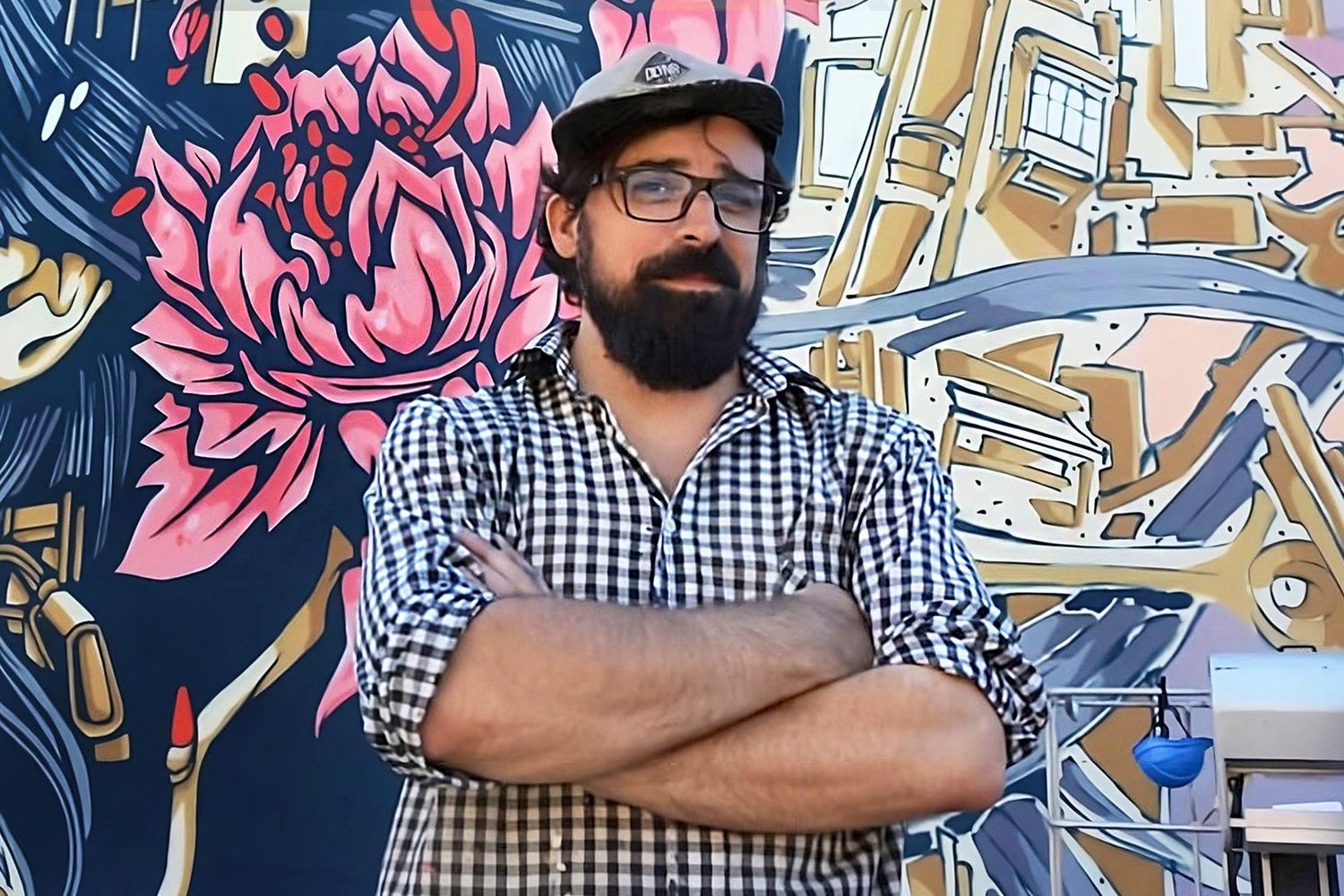
Kanos: “My art confronts the code of cyberpunk with Art Nouveau”
Stéphanie Pioda • Posted on October 31, 2024
A true globetrotter, Parisian artist Kanos paints his new cyberpunk icons on walls all around the world. Combining the sensuality of Mucha's “flower women” with mechanical elements in order to question transhumanism and the upcoming challenges of our society with new technologies, he introduces symbols to create his own allegorical vocabulary. Visions of a dystopian future or just from a pure science fiction movie, the artist has the floor.
Can you tell us about your artistic universe and how you define it?
I usually combine organic elements with mechanical ones to talk about different type of issues such as the arrival of new technologies in our society and the transhumanism. These are the next challenges that mankind will be facing and major themes primarily found in science-fiction movies. I thus approach the fusion between humans and technologies, while questioning the subject on how we will maintain our humanity in this new context. I therefore create dualities by confronting the organic and the mechanical, the living and the concrete, the machine and the human, the natural and the artificial, the cyberpunk aesthetic and the timeless beauty of Mucha's characters. These mixtures create meaning and stimulate reflection when we are exposed to them. Which seems Timelier today, given the rapid development of AI and its growing impact on our society.
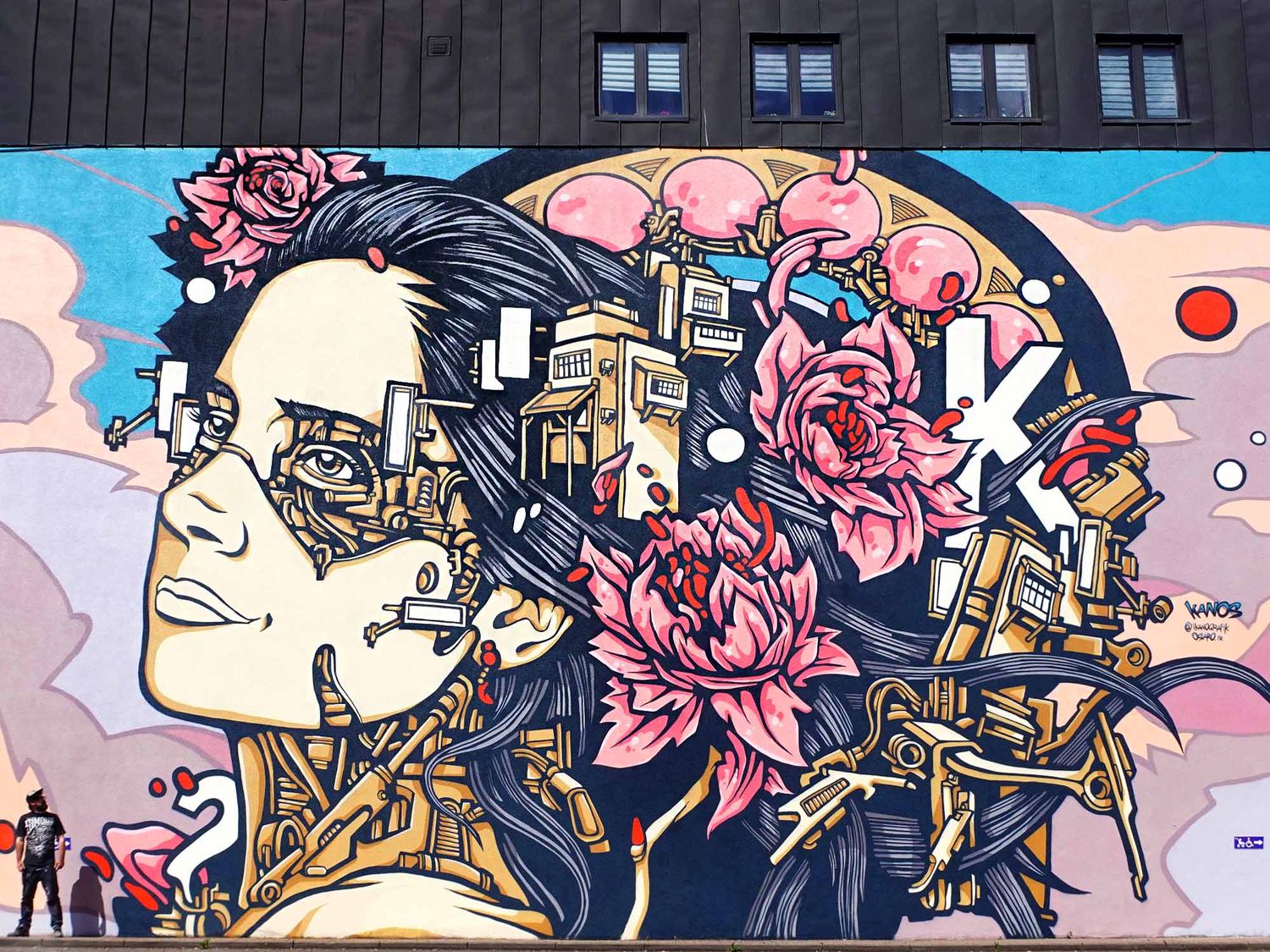
Can you give us the highlights of your career and explain how you got into Urban Art?
I was born in 1983 in the northern suburbs of Paris, where the only imagery that caught my attention in the public space was tags and graffiti on railroads. As a child, I always drew and wanted to make large paintings, so it was a kind of ultimate goal to me. After a scientific baccalaureate, which led me to distance myself from maths, I decided to study art. I studied graphic design at the Beaux-Arts in Reims and Cambrai, where I obtained a DNAP (Diplôme national d'arts plastiques) and a DNSEP (Diplôme National Supérieur d'Expression Plastique), and it was precisely during these years of study that I defined myself as a graffiti artist. In fact, it was for my 3rd year diploma in 2006 that I developed the concept of “CelloGraff”, an innovative approach that consisted of stretching cellophane surfaces in public spaces, thus offering an ephemeral medium for bringing graffiti into unexpected places. This marked the beginning of my career as a painter, although my first tags dated back to 1999.
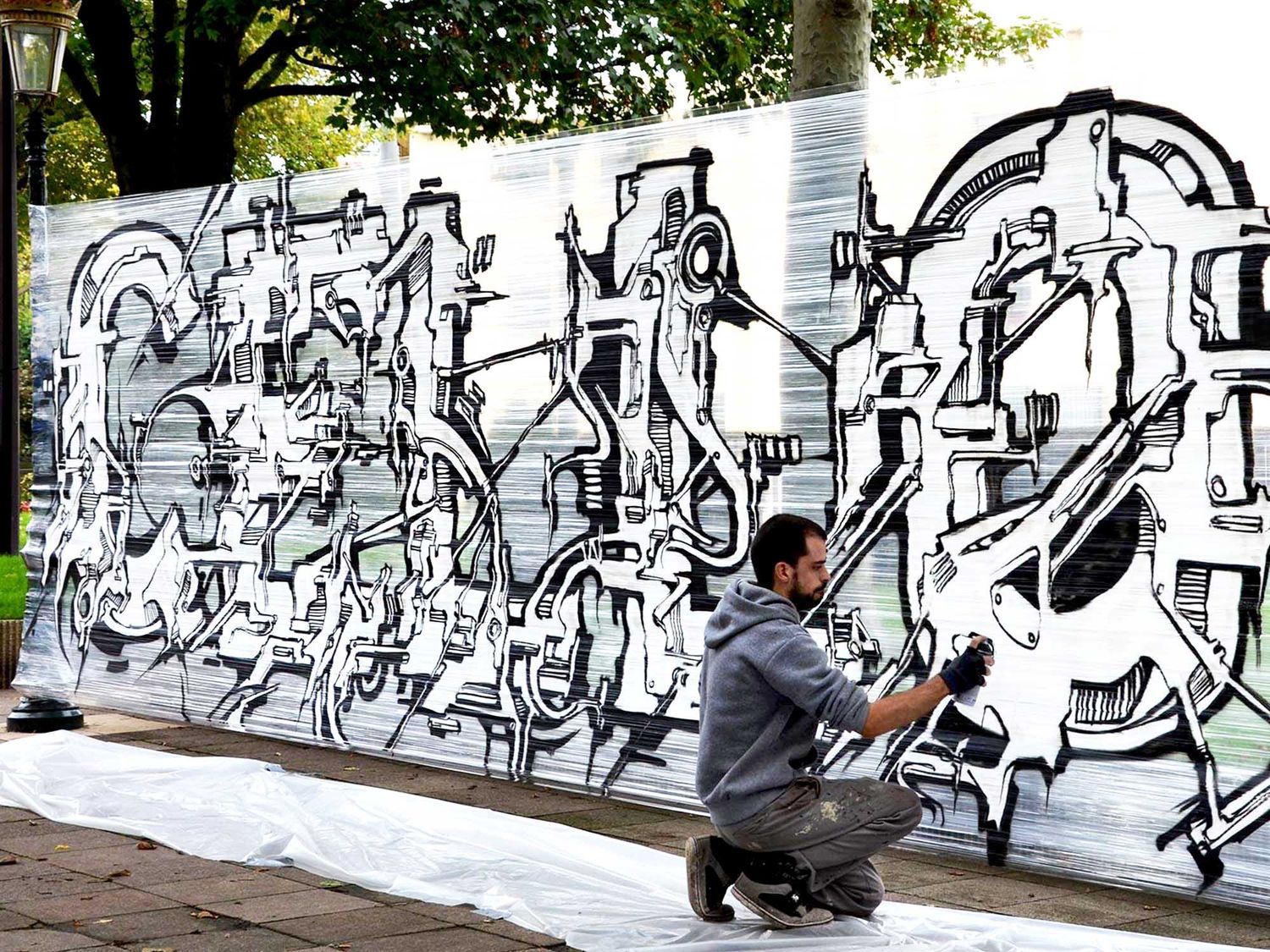
Can you explain us why are you reappropriating the large advertising posters from Mucha that marked Art Nouveau?
Indeed, I take a lot of Mucha's visuals of women, which he created at the turn of the 19th and 20th centuries, and then add my artistic universe over them. I have always found that they had a lot of grace, even if they belong to a bygone imagery, which was very Parisian and very French, while he himself was Czechoslovakian. From my very first compositions, I found it interesting to combine the imagery of his universe with the aesthetics of cyberpunk, to create a cyber-Mucha or Méca-Mucha. With him, everything is allegory, so reappropriating these figures is a way for me to create meaning through new allegorical forms, even if it is certainly less profound than his work, because I do not have the religious or cabalistic dimension of the posters’ master. However, I also add symbolic animals, such as a fish that evokes luck, or a peony that symbolizes honor and courage.
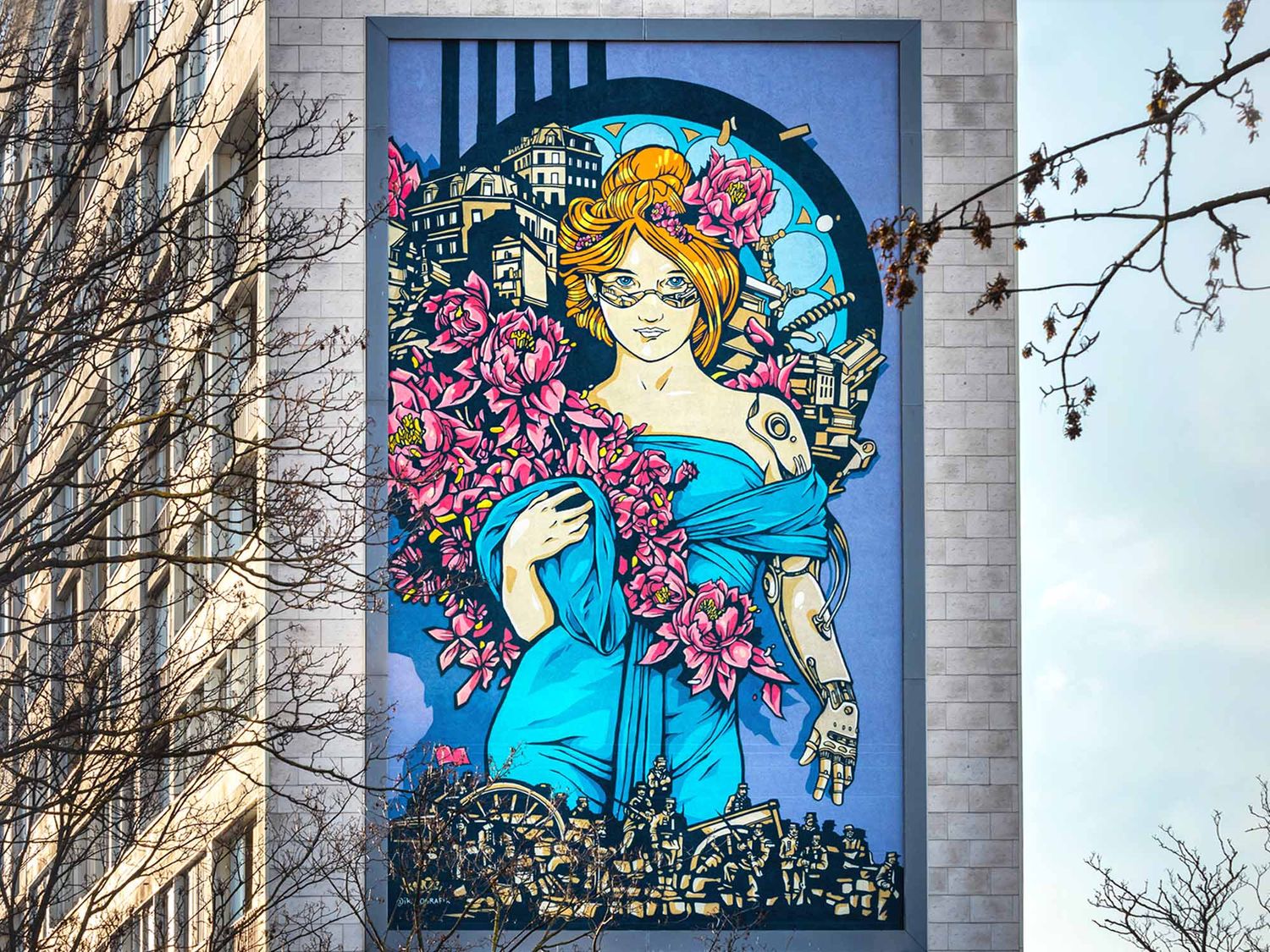
You also seem to be inspired by the Asian repertoire for these symbols?
Yes, I have traveled all over the world and more especially on the Asian continent, which first inspired me to create city landscapes before turning my art to characters. The city of Hong Kong made a particularly strong impression on me, as it is a city driven by an incredible activity and full of material. Each time I went there, I came back with an overflowing imagination that has greatly nourished my artistic inspiration. In addition, I also grew up with Hong Kong films, including those by Jackie Chan, which are graphically very strong, and I also have been very influenced by the world of science fiction, with Katsuhiro Otomo's film “Akira” at the top of the list, Syd Mead's elaborate designs as seen in the movie “Blade Runner” as well as Akira Toriyama's comics, which inspired my first drawings as a child.

You apparently belong to 2 crews, can you introduce them to us?
Thanks to my street work, I quickly met other graffiti artists who were members of the ODV crew, a group of artists from the northern suburbs of Paris who immediately have become my family since I joined the group in 2004. Later on, I then joined the CBS crew, which is one of the oldest crews in Los Angeles (founded in 1984) and that enabled me to make a lot of connections in the United-States as well as to travel the world. This historical crew has over 250 members spread across the globe, this is a real honor for me to be part of it!
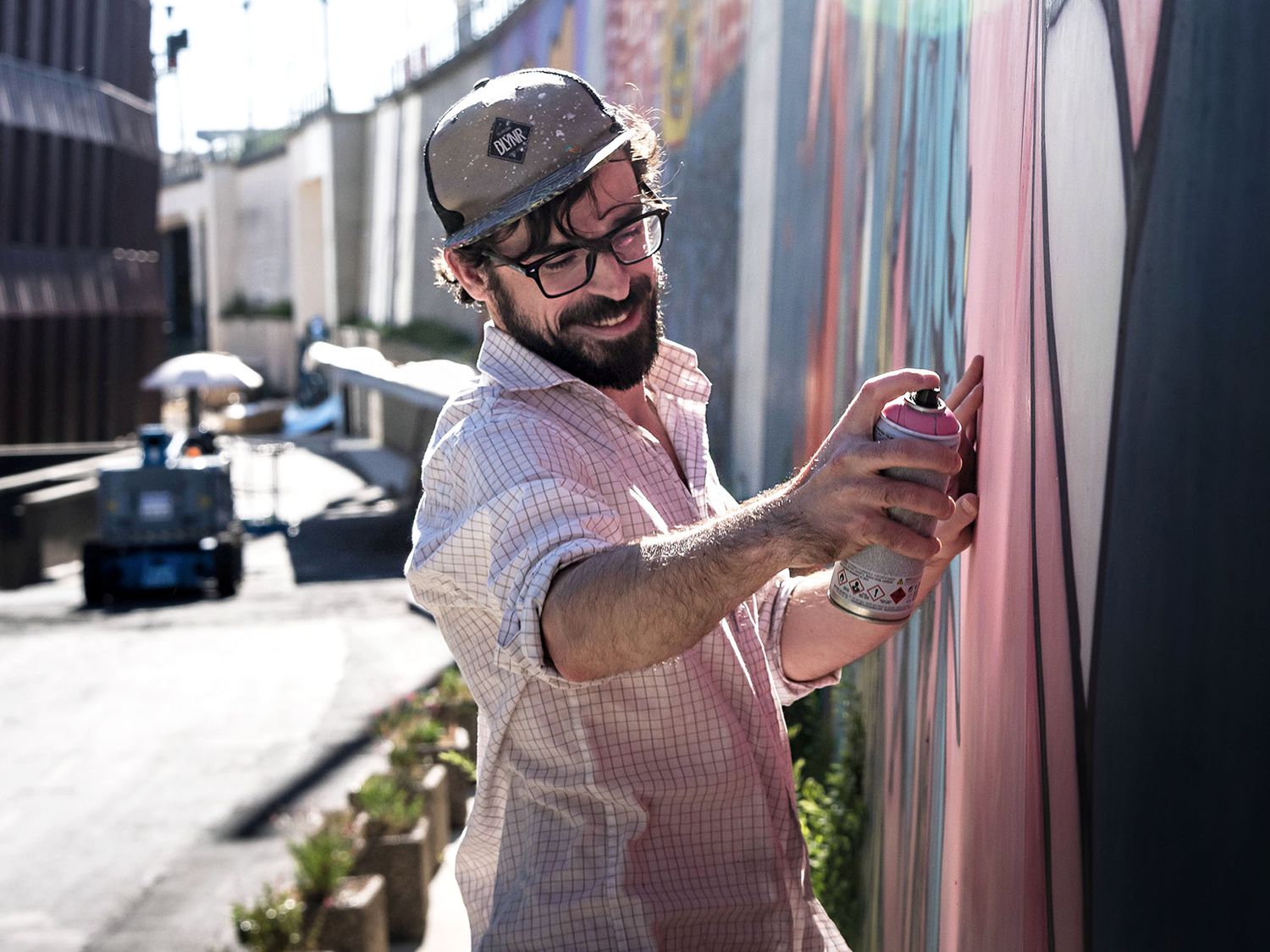
What kind of significant projects have you been able to carry out thanks to these encounters?
Together with Sloke, the oldest active graffiti artist in Austin, the capital of the state of Texas, we launched the concept “The Road Warriors” in 2019, whose title is a reference to both “Mad Max” and the movie “The Warriors”. The idea behind this concept is to take the car and then make a stop when we find a spot to paint, in other words, car/painting every day! For example, on the occasion of the 3rd edition in 2023, we set off from Austin and then criss-crossed the roads to Dallas, Kansas, Chicago, Dayton, Philadelphia, New York, Chattanooga and finally New Orleans. For 20 days and over 8’000 km, we travelled, discovered other artists, met people and satisfied our need to paint walls. For me, that is really the best thing in the world of Graffiti. You can go anywhere on the planet and you will always find someone who is on the same wavelength as you, who will share your sofa and with whom you share the same passion.
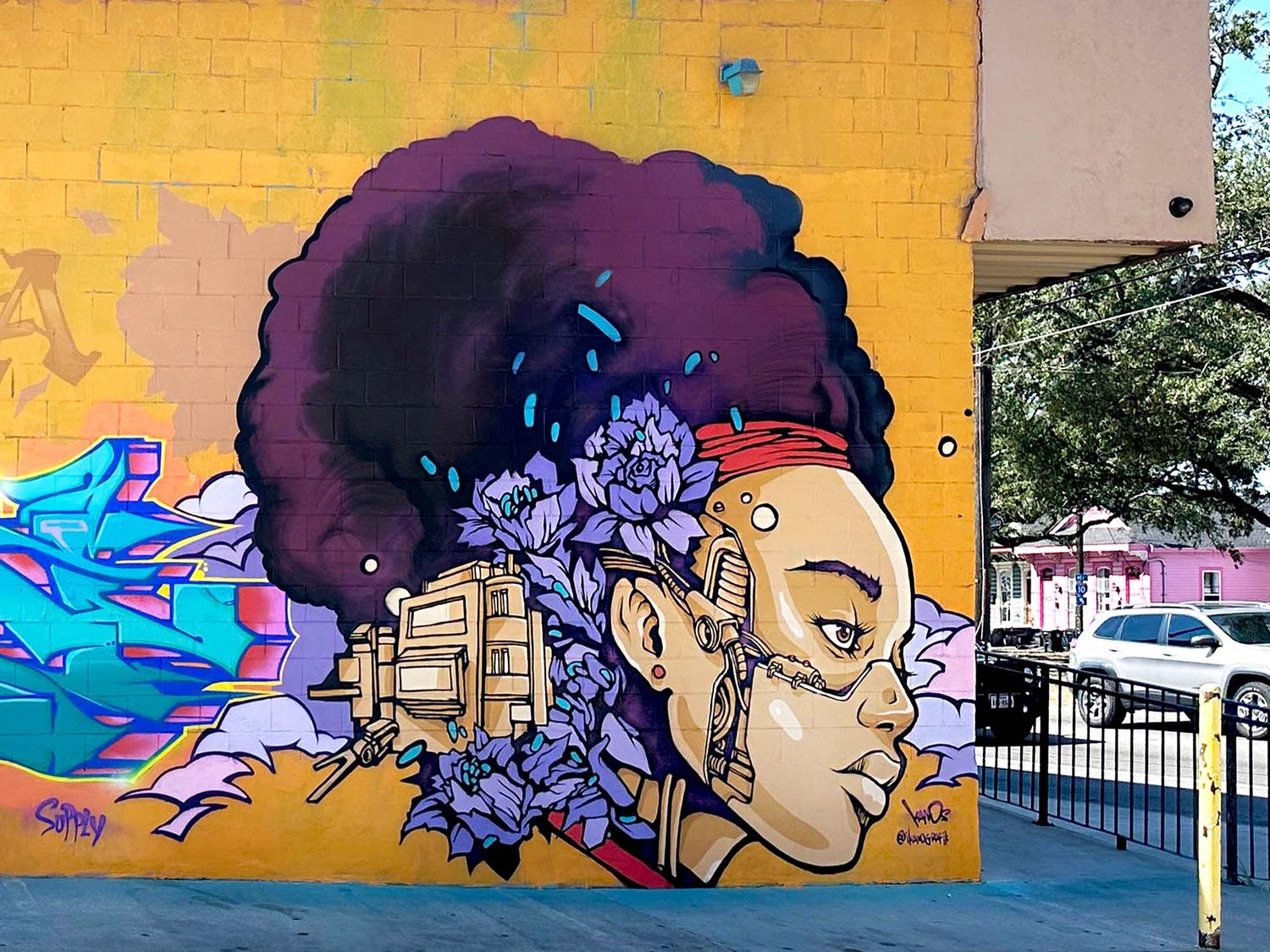
Discover the profile of Kanos and his available artworks.